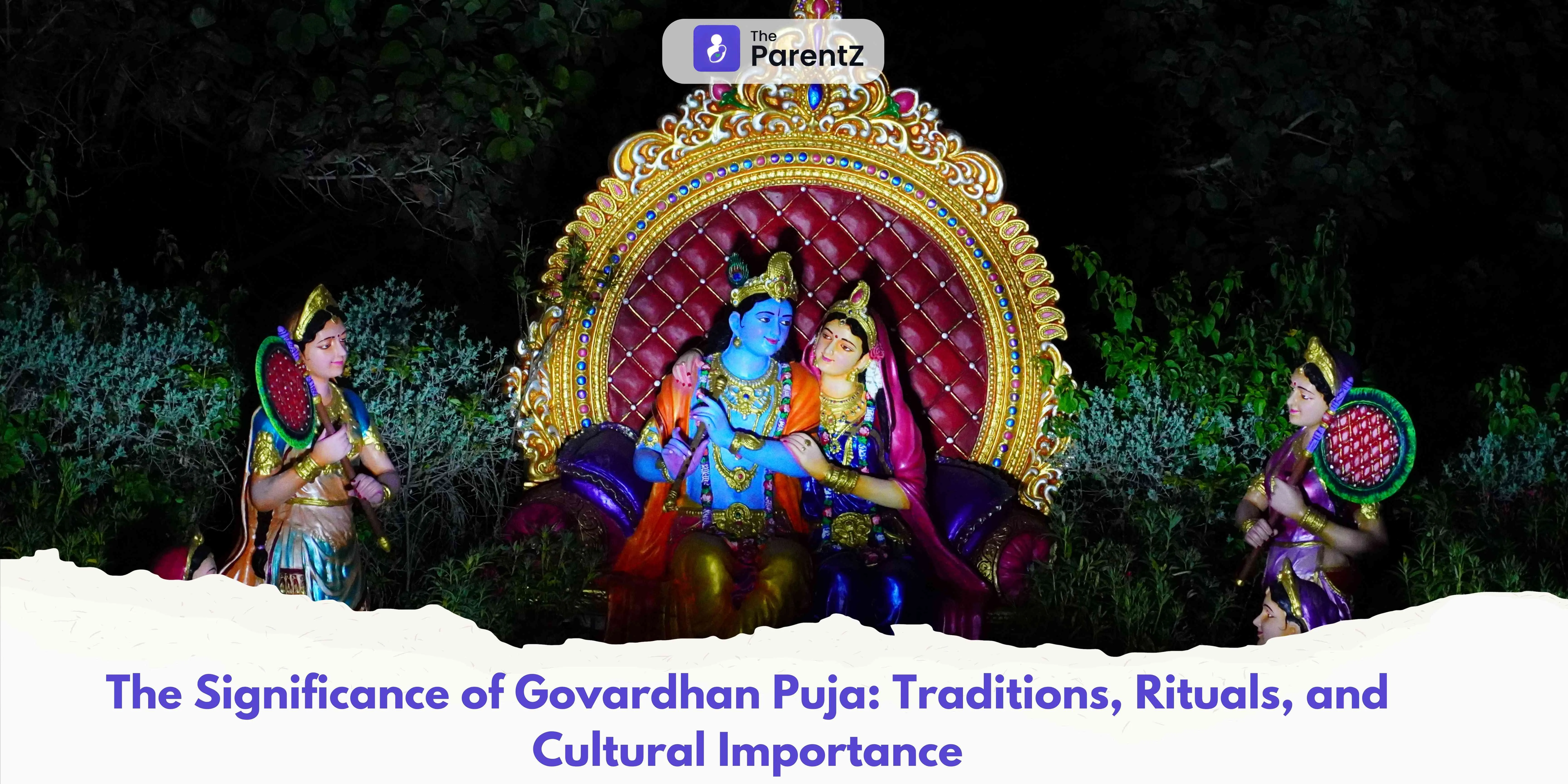Govardhan Puja, also known as Annakut Puja, is an integral part of the Hindu festival of Diwali. Celebrated on the fourth day of the five-day Diwali festivities, Govardhan Puja holds significant religious and cultural importance, particularly in the northern and western regions of India. The festival commemorates the divine intervention of Lord Krishna in saving the people of Vrindavan from a disastrous storm by lifting the Govardhan Hill. This day symbolizes the victory of humility, faith, and devotion over ego and arrogance. It also celebrates nature's bounty and the harmonious relationship between humans and the environment.
This article delves into the traditions, rituals, and cultural significance of Govardhan Puja, offering insights into how the festival is celebrated and its deeper meanings for Hindus across the world.
The Mythological Background
The origins of Govardhan Puja are rooted in an important mythological event from the life of Lord Krishna. According to Hindu scriptures, the people of Vrindavan traditionally worshiped Lord Indra, the God of rain, to ensure a good harvest. However, Lord Krishna, seeing the pride and arrogance that Lord Indra had developed due to the people's devotion, advised the villagers to instead worship the Govardhan Hill and nature, which provides the resources needed for survival.
Offended by this, Lord Indra unleashed torrential rains and thunderstorms on Vrindavan. To protect the villagers and their cattle, Lord Krishna lifted the Govardhan Hill on his little finger, providing shelter to everyone. This act of divine protection lasted for seven days, after which Indra realized his mistake and stopped the rains.
This story not only emphasizes the power and benevolence of Lord Krishna but also conveys a deeper message about the importance of nature and the rejection of false pride.
Traditions and Rituals of Govardhan Puja
Govardhan Puja is marked by various traditional rituals that pay homage to Lord Krishna and the Govardhan Hill. These rituals vary across regions but typically include the following elements:
- Annakut (Offering of Food): The word "Annakut" literally means "mountain of food," and it is one of the most distinctive aspects of Govardhan Puja. Devotees prepare a variety of vegetarian dishes, ranging from sweets to savory items, which are offered to Lord Krishna as a gesture of gratitude for his protection. These food items are often arranged in the shape of a small hill, symbolizing the Govardhan Hill, and are later distributed among family members, friends, and the needy.
- Govardhan Parikrama (Circumambulation): In many parts of India, particularly in Mathura and Vrindavan, devotees perform the ritual of circumambulation around the Govardhan Hill. This practice, known as "Govardhan Parikrama," involves walking barefoot around the hill while chanting devotional hymns and offering prayers. The circumambulation is believed to cleanse the soul and bring good fortune.
- Cattle Worship: Since cattle were a vital part of the villagers' lives in the story of Govardhan Puja, cows and other livestock are also worshiped during the festival. In rural areas, people decorate their cattle with garlands and paint their horns in bright colors. They offer special food to the cows and seek their blessings, recognizing the importance of animals in sustaining human life.
- Puja and Bhajans: Families perform rituals and prayers at home or in temples, offering flowers, food, and prayers to Lord Krishna. Devotional songs (bhajans) dedicated to Lord Krishna are sung throughout the day, creating a joyous and spiritual atmosphere.
Cultural Importance of Govardhan Puja
Govardhan Puja holds profound cultural significance as it symbolizes the connection between humans, nature, and divinity. The festival serves as a reminder of the importance of environmental conservation and respecting the natural resources that sustain life. By worshiping the Govardhan Hill, devotees acknowledge that the earth provides everything humans need to survive, including food, shelter, and sustenance.
Additionally, the festival highlights the importance of humility and devotion over pride and arrogance. Lord Krishna's lifting of the Govardhan Hill is a metaphor for the idea that divine grace can protect and provide for those who live in harmony with nature and uphold the virtues of humility and selflessness.
For farmers, Govardhan Puja also marks the end of the harvest season. It is an occasion to thank the gods for the bountiful harvest and seek blessings for prosperity in the coming year. The festival fosters a sense of community as families, neighbors, and entire villages come together to celebrate, share food, and offer prayers.
In modern times, the festival's emphasis on harmony with nature is especially relevant as environmental concerns continue to grow globally. Govardhan Puja serves as a cultural reminder of the need to protect and respect the environment, a value deeply embedded in Hindu tradition.
Regional Variations
While Govardhan Puja is celebrated primarily in northern India, different regions have their unique ways of observing the festival:
- Mathura and Vrindavan: As the birthplace of Lord Krishna, Mathura and Vrindavan witness grand celebrations of Govardhan Puja. Thousands of devotees flock to these cities to perform Govardhan Parikrama, and the temples are adorned with lights and flowers. The festival here is celebrated with great enthusiasm, with massive offerings of food and large-scale processions.
- Gujarat: In Gujarat, Govardhan Puja coincides with the Gujarati New Year, and the festival is celebrated with equal grandeur. The Annakut tradition is particularly significant here, with temples preparing massive quantities of food to offer to Lord Krishna.
- Maharashtra: In Maharashtra, the day is celebrated as Bali Pratipada, marking the return of King Bali to earth. People offer prayers to King Bali for prosperity and happiness.
Each region's unique traditions contribute to the cultural richness of Govardhan Puja, making it a diverse and vibrant celebration across India.
Conclusion
Govardhan Puja is a festival rich in spiritual, cultural, and environmental significance. It serves as a reminder of the importance of humility, the reverence for nature, and the divine protection that sustains life. Through rituals like Annakut, cattle worship, and Govardhan Parikrama, the festival encourages the spirit of community, gratitude, and harmony with nature.
As modern society faces growing environmental challenges, the messages embedded in Govardhan Puja are more relevant than ever. By celebrating this festival, devotees not only honor Lord Krishna's divine intervention but also reinforce the timeless values of respect for the earth and humility in the face of greater cosmic forces.








Be the first one to comment on this story.